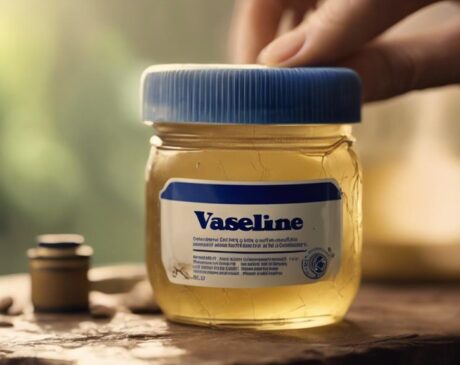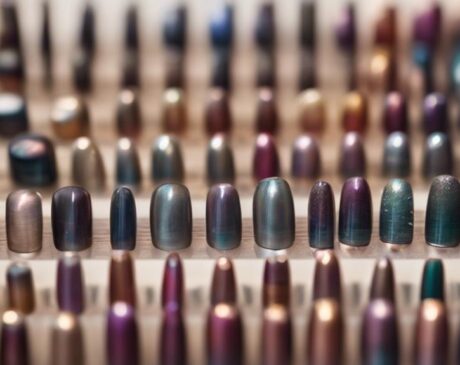Is Gel Nail Dust Harmful?

Inhaling gel nail dust can be harmful. It may lead to respiratory irritation and allergic reactions. Nail technicians face skin and eye irritation risks. Long-term effects can include chronic bronchitis and skin irritations. Safety measures like ventilation and protective equipment are crucial. For more insights on minimizing risks and promoting health in nail salons…
Key Takeaways
- Gel nail dust poses health risks from inhaling fine particles.
- Risks include respiratory irritation, allergies, and long-term effects.
- Proper ventilation and protective equipment are essential for safety.
- Skin and eye irritation are common risks for nail technicians.
- Implement safety measures like masks, gloves, and ventilation systems.
Understanding Gel Nail Dust
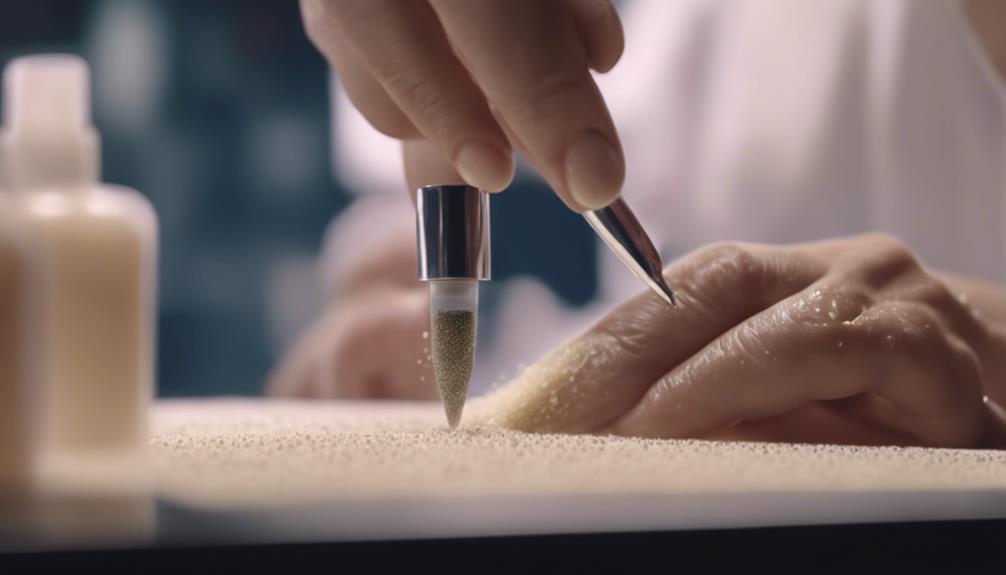
Understanding the composition and potential hazards of gel nail dust is crucial for ensuring the safety of both clients and nail technicians. Gel nail dust is a byproduct created during the process of filing and shaping gel nails. It primarily consists of polymer particles, such as acrylates and other chemicals found in gel nail products. These particles are extremely fine and can become airborne, posing a risk when inhaled or coming into contact with skin and eyes.
Innovations in the nail industry have led to the development of advanced ventilation systems and dust extractors to minimize exposure to gel nail dust. Additionally, wearing appropriate personal protective equipment, such as masks and gloves, can further reduce the risks associated with nail dust inhalation and skin contact.
Risks of Inhaling Nail Dust
The inhalation of nail dust poses significant health risks, potentially leading to respiratory issues that can impact overall well-being. Understanding the hazards associated with inhaling nail dust is crucial in maintaining a safe working environment, especially for individuals regularly exposed to these particles. Exploring the specific health risks and inhalation hazards can shed light on the importance of proper safety measures in nail salons and other environments where nail dust is prevalent.
Health Risks Associated
Inhaling nail dust can pose significant health risks to individuals working in nail salons or frequenting such establishments. The particles generated during the filing and shaping of gel nails can be harmful when inhaled regularly. Here are three key health risks associated with inhaling nail dust:
- Respiratory Irritation: Nail dust particles can irritate the respiratory tract, leading to coughing, wheezing, and shortness of breath.
- Allergic Reactions: Some individuals may develop allergies to the chemicals present in nail dust, causing skin rashes, nasal congestion, or watery eyes.
- Long-term Health Effects: Prolonged exposure to nail dust has been linked to more severe respiratory issues, such as chronic bronchitis and asthma.
Respiratory Issues Possible
Exposure to nail dust generated during gel nail procedures can contribute to the development of respiratory issues in individuals exposed to this hazardous substance. When nail dust is inhaled, it can irritate the respiratory system, leading to symptoms such as coughing, wheezing, shortness of breath, and even exacerbating conditions like asthma. The fine particles in the dust can penetrate deep into the lungs, causing inflammation and potential long-term damage. Furthermore, certain chemicals present in gel nail products may pose additional risks to respiratory health when inhaled. It is crucial for nail technicians and clients alike to be aware of these potential dangers and take necessary precautions, such as using proper ventilation systems and personal protective equipment, to minimize the risk of respiratory issues associated with gel nail dust exposure.
Inhalation Hazards Explained
Prolonged exposure to nail dust generated during gel nail procedures can pose significant health risks due to the inhalation hazards associated with fine particles and chemical components present in the dust. The following highlights the dangers of inhaling nail dust:
- Respiratory Irritation: Fine particles in nail dust can irritate the respiratory system, leading to symptoms such as coughing, wheezing, and shortness of breath.
- Chemical Exposure: The dust may contain harmful chemicals like formaldehyde and acrylates, which can cause further respiratory issues and potential long-term health effects.
- Risk of Allergies: Continuous inhalation of nail dust may trigger allergic reactions in some individuals, exacerbating respiratory conditions and skin sensitivities.
Health Concerns for Nail Technicians
Health concerns for nail technicians are a crucial aspect of ensuring a safe working environment. Nail technicians face exposure risks from chemicals and fumes present in nail products, emphasizing the importance of proper respiratory protection measures. Additionally, preventing skin irritation through the use of gloves and other protective equipment is essential for maintaining the well-being of nail technicians.
Technician Exposure Risks
Nail technicians face potential risks to their well-being due to the nature of their work with gel nail dust. Exposure to this dust can lead to various health concerns, impacting the overall quality of life for these professionals. The risks include:
- Skin Irritation: Constant contact with gel nail dust can cause skin irritation, leading to redness, itching, or even dermatitis.
- Eye Irritation: Fine particles of gel nail dust can irritate the eyes, causing discomfort and potential long-term damage if not addressed promptly.
- Allergic Reactions: Prolonged exposure may trigger allergic reactions in some technicians, manifesting as rashes, breathing difficulties, or other symptoms that affect their ability to work efficiently.
Respiratory Protection Measures
Implementing proper respiratory protection measures is essential for mitigating the health concerns faced by nail technicians working with gel nail dust. Inhaling fine particles from gel nail dust can lead to respiratory issues over time. To combat this, technicians should use a well-fitted N95 respirator mask designed to filter out harmful particles while ensuring easy breathing during work. Additionally, ventilation systems equipped with high-efficiency particulate air (HEPA) filters can help remove dust particles from the air, creating a safer work environment. Regular maintenance and replacement of filters are crucial to ensure their effectiveness. By incorporating these innovative respiratory protection measures, nail technicians can safeguard their respiratory health and work comfortably with gel nail products.
Skin Irritation Prevention
Concerns related to skin irritation are a significant health consideration for nail technicians working with gel nail products. To prevent skin irritation effectively, technicians should consider the following:
- Use Protective Gloves: Wearing gloves while working with gel nail products can act as a barrier between the skin and potentially irritating substances, reducing the risk of irritation.
- Apply Moisturizers: Regularly moisturizing hands and cuticles can help maintain skin hydration and integrity, minimizing the chances of irritation from prolonged exposure to gel products.
- Choose High-Quality Products: Opt for gel nail products that are formulated with skin-friendly ingredients to reduce the likelihood of adverse reactions and irritation on the skin.
Tips for Minimizing Exposure
To reduce potential health risks, it is essential to employ effective ventilation systems in nail salons when working with gel nail products. Proper ventilation helps in minimizing exposure to harmful chemicals present in gel nail dust, ensuring a safer environment for both clients and technicians. Additionally, using personal protective equipment such as gloves and masks can further reduce direct contact and inhalation of the dust particles. Implementing regular cleaning schedules for salon equipment and surfaces can also help in reducing the accumulation of dust particles in the workspace.
Moreover, investing in high-quality dust extraction systems specifically designed for nail salons can significantly decrease the presence of airborne particles. These innovative systems are equipped with advanced filtration mechanisms to capture and contain harmful substances effectively. Encouraging regular breaks and providing adequate training on handling gel products can also aid in minimizing exposure risks. By incorporating these strategies, nail salons can create a healthier and safer environment for everyone involved in gel nail treatments.
Importance of Proper Ventilation
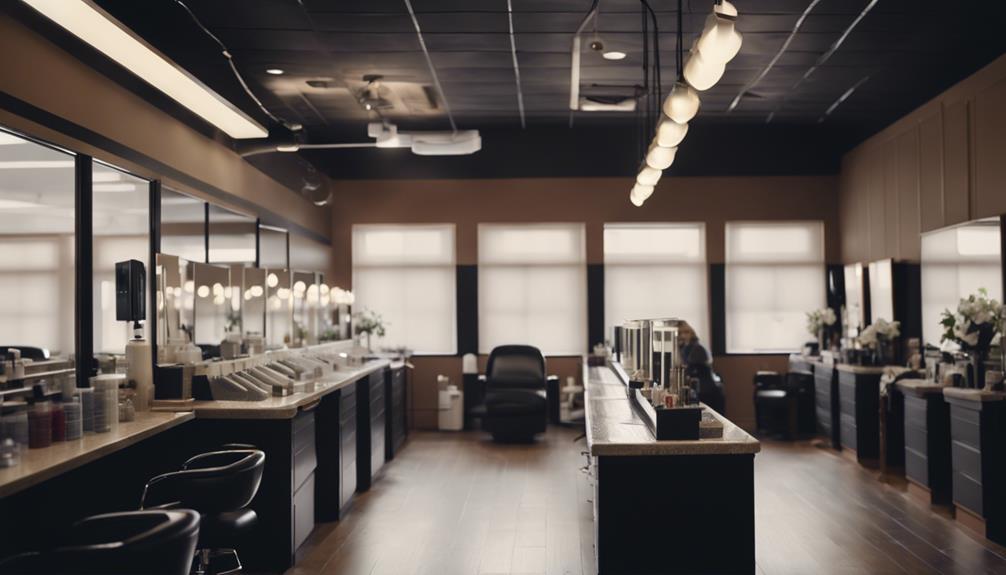
Ensuring adequate ventilation in nail salons is crucial for mitigating the health risks associated with exposure to gel nail dust. Proper ventilation helps to maintain a safe and healthy environment for both customers and nail technicians. Here are three key reasons why proper ventilation is essential:
- Air Quality: Effective ventilation systems help to remove harmful particles and chemicals from the air, preventing them from being inhaled. This promotes better air quality and reduces the risk of respiratory issues caused by prolonged exposure to gel nail dust.
- Temperature Regulation: Ventilation systems can help regulate the temperature in the salon, creating a more comfortable working environment. This is important for both the well-being of the technicians and the overall customer experience.
- Odor Control: Gel nail products can produce strong odors that may be unpleasant or irritating. Proper ventilation helps to disperse these odors, creating a more pleasant atmosphere for everyone in the salon.
Potential Long-Term Effects
With prolonged exposure to gel nail dust, individuals may experience potential long-term health effects that necessitate careful consideration and preventative measures. Some of the potential long-term effects of inhaling gel nail dust include respiratory issues, skin irritations, and eye problems. Here is a table summarizing these effects:
| Potential Long-Term Effects of Gel Nail Dust |
|---|
| Respiratory Issues |
| Skin Irritations |
| Eye Problems |
Respiratory issues can manifest as coughing, wheezing, or difficulty breathing due to the inhalation of fine particles present in the dust. Skin irritations may include rashes, dryness, or dermatitis, especially if the dust comes into direct contact with the skin. Eye problems such as redness, itching, or irritation can occur if gel nail dust particles enter the eyes. To mitigate these potential long-term effects, proper ventilation, personal protective equipment, and regular health check-ups are essential. It is crucial for individuals working with gel nail products to prioritize their health and safety by taking proactive measures to reduce exposure to harmful dust particles.
Conclusion and Safety Recommendations
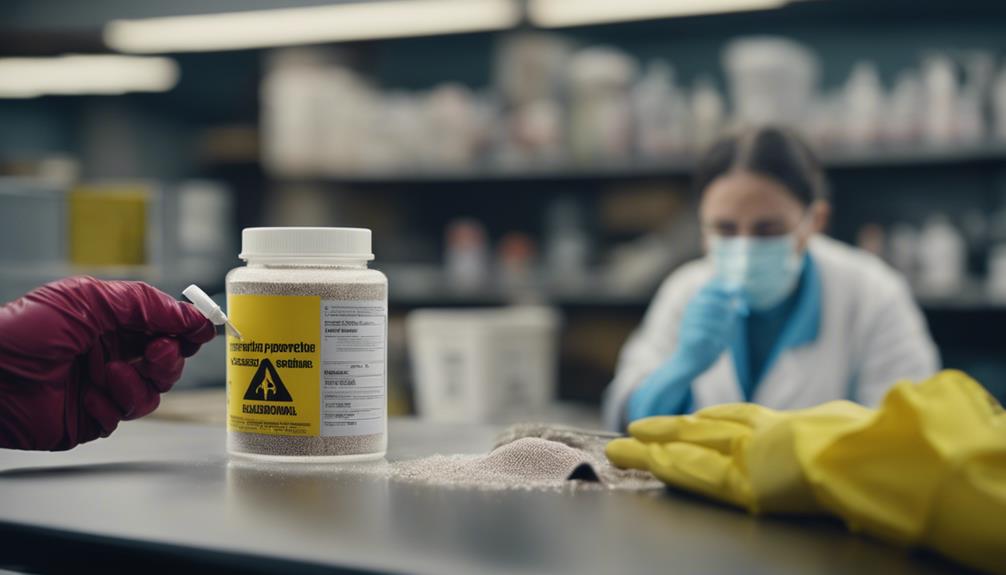
Considering the potential risks associated with prolonged exposure to gel nail dust, it is imperative to prioritize safety measures and implement preventive strategies. While gel manicures offer a durable and glossy finish, the health implications cannot be overlooked. To ensure the well-being of both clients and nail technicians, the following safety recommendations are crucial:
- Ventilation Systems: Invest in advanced ventilation systems that effectively capture and filter nail dust particles, minimizing inhalation risks for individuals in the vicinity.
- Personal Protective Equipment (PPE): Encourage the use of appropriate PPE such as masks and gloves to create a barrier between individuals and harmful dust particles, reducing direct contact and inhalation.
- Regular Maintenance and Cleaning: Establish routine cleaning protocols to remove accumulated dust from workstations and equipment. Regular maintenance not only promotes a cleaner working environment but also reduces the overall exposure to gel nail dust.
Frequently Asked Questions
Can Gel Nail Dust Cause Allergic Reactions in Some People?
Gel nail dust can potentially trigger allergic reactions in individuals due to its composition and the chemicals present. Understanding personal sensitivities and ensuring proper ventilation in salons can help minimize these risks.
Are There Any Regulations in Place to Protect Nail Technicians From Inhaling Nail Dust?
Regulations exist to safeguard nail technicians from inhaling hazardous nail dust. Ventilation systems, masks, and proper training are common measures. Compliance with guidelines is essential to ensure a safe work environment and protect the health of professionals in the nail industry.
Can Gel Nail Dust Lead to Respiratory Issues Over Time?
Over time, exposure to gel nail dust may contribute to respiratory issues. Inhalation of fine particles poses potential risks, highlighting the importance of proper ventilation and personal protective equipment. Regular risk assessments and adherence to safety protocols are imperative.
How Can Customers Protect Themselves From Inhaling Nail Dust During a Manicure?
Customers can protect themselves from inhaling nail dust during a manicure by requesting proper ventilation in the salon, wearing a mask designed to filter particles, ensuring technicians use appropriate dust extraction systems, and opting for waterless manicures to minimize dust exposure.
Is There a Safe Way to Dispose of Gel Nail Dust to Prevent Environmental Harm?
Proper disposal of gel nail dust can mitigate environmental impacts. Implementing eco-friendly methods such as using HEPA filters, disposable bags, or recycling services can help prevent harm. Encouraging responsible disposal practices is crucial.


